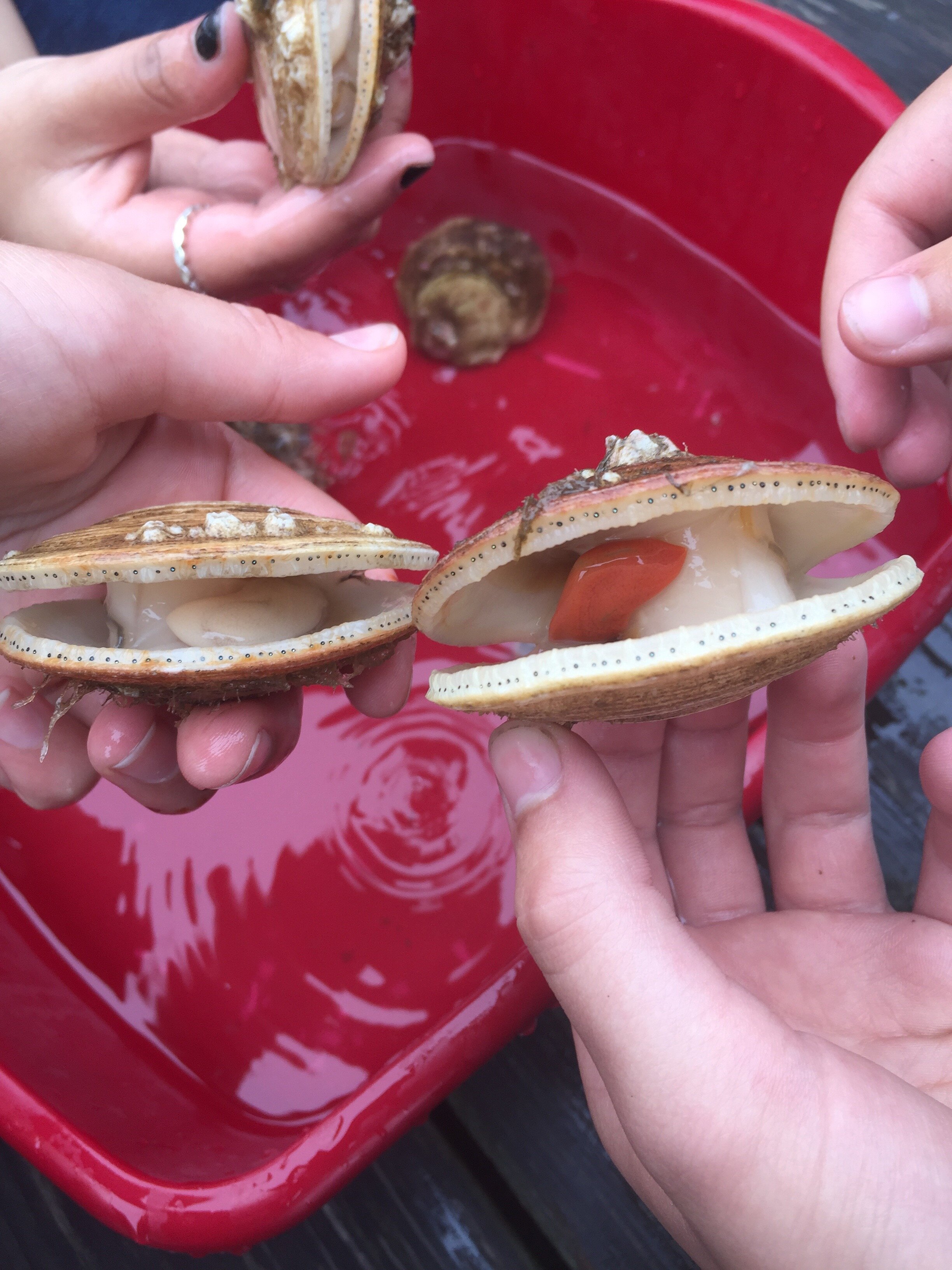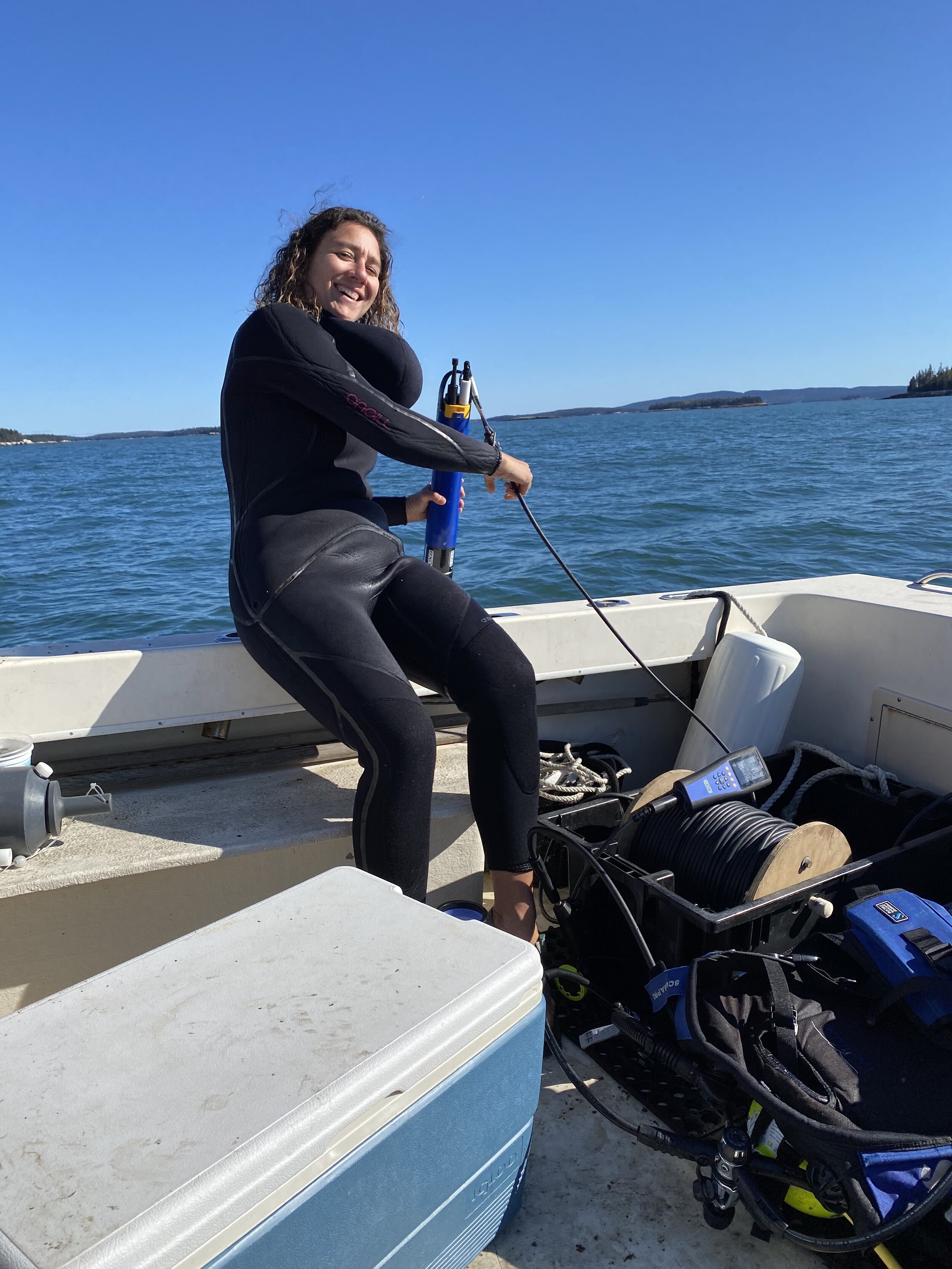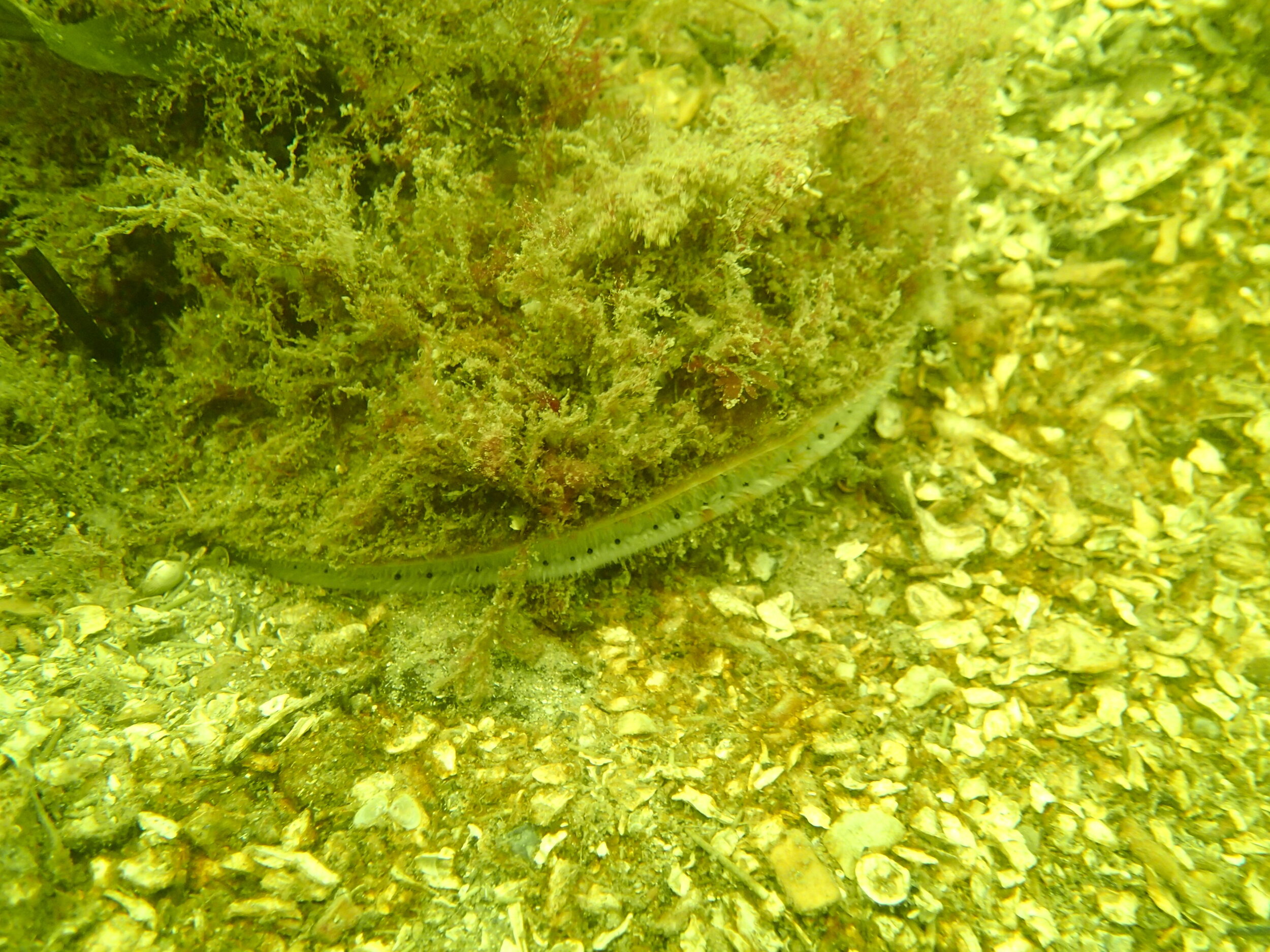Current Research Projects
Scallop Tagging Study
In collaboration with the Maine Department of Marine Resources (DMR) and funded by Maine Sea Grant Program Development funds, Hurricane conducted a scallop tagging study in Spring 2020. This tag-recapture study will provide spatially explicit growth information, help identify areas for closures and enhancement, and shine light on the scale of movement, potential for exchange of scallops between management areas, and potential size ranges at which scallops are less likely to disperse away from an enhanced area. A total of 800 scallops were tagged and released back into the Lower Penobscot Bay rotational management area. An additional 200 tagged scallops and 200 control scallops are being held in lantern nets on our aquaculture site to study growth, tag retention, and mortality. When caught during the scallop season, the tag number, catch location, and shells will be returned to us by fishermen and we expect to begin receiving tag returns in the 2021/22 scallop season. More information on this project can be found here at Phoebe’s blog post!
Scallop eDNA
Genetic material captured in aqueous or other environments can be quantified to provide ecological inferences. This environmental DNA, or eDNA, ranges from whole genomes of intact microorganisms (like gametes or larvae) to free DNA fragments shed from cells of larger organisms. eDNA science offers capacity for wider research participation [21], shared sampling effort with fishers and farmers, and deeper data integration to address the scales and complexities of simultaneously managing wild capture and aquaculture fisheries. eDNA may particularly inform our understanding of larval supply and dispersal. By integrating eDNA science into existing biophysical models for the Gulf of Maine and monitoring standing stock biomass, fecundity, timing of reproduction, and environmental variability at Hurricane and partner aquaculture farm sites, we can quantify scallop larval supply from a presumptive ‘source’ population (e.g, a farm or a monitored wild population) and recruitment success at the anticipated ‘sink’ population determined by biophysical larval dispersal models.
Scallop Reproductive Monitoring
The gonadal somatic index (GSI) is the ratio of wet gonadal mass to the total wet body mass without the shell (Langton et al. 1987, Parsons et al. 1992, Bayer et al. 2016). Standardized gonad weights have been used to determine the reproductive cycle of many bivalve and fish species, and are especially accurate for P. magellanicus because the gonad is self-contained and the follicles are retained after spawning. We have been collected GSI data from wild and aquaculture scallops across Penobscot Bay since 2019. Sample sites include Hurricane Island, Marsh Cove in North Haven, and Andrew’s Island in Stonington. Wild sites generally correlate to each of these farms. Varying size classes are housed in lantern nets at each site (and in bottom cages at Hurricane) and samples are taken weekly in the summer and early fall, and monthly for the rest of the year. The viscera are dissected from each animal and the wet weight of the gonad (with the crystalline style included), the adductor muscle (meat), remaining viscera, and shells will be measured. Additionally, sex and shell weight and height will be recorded.
Closed Area Monitoring
We have been conducting scallop dive transects around Hurricane Island began since 2019. The goal of this project is to monitor local scallop populations over the long term to understand local population responses to rotational management efforts. Hurricane Island is located within the Lower Penobscot Bay rotational management area, offering a unique opportunity to access wild scallop beds to monitor their change. Each year we conduct survey dives at 9 sites around Hurricane Island. Each transect is a 100 meter (50 meter in 2019) belt transect where we collect data on depth, substrate, associated fauna, and scallop abundance and size classes. 2021 will be our third consecutive year monitoring these populations before they are again open for harvest in the 2021/22 wild scallop season.
















